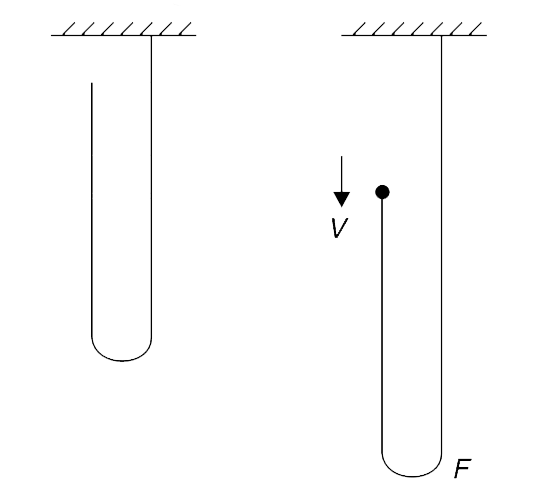One end of a ruler is fixed on a table and the other end is struck
The vibration of the ruler produces
heat
light
sound
electrical
Step-by-Step Solution:
1. Understanding the Setup: The question describes a scenario where one end of a ruler is fixed to a table, and the other end is struck. This setup is crucial for understanding the vibrations that will occur.
2. Identifying the Action: When the free end of the ruler is struck, it will move up and down. This motion is known as vibration. The ruler will oscillate back and forth around its fixed point.
3. Recognizing the Type of Energy Produced: In the context of sound, when an object vibrates, it typically produces sound waves. The vibrations of the ruler create disturbances in the air around it, which we perceive as sound.
4. Eliminating Other Options: The question provides options that include light, heat, and electrical energy. Since the ruler is vibrating, it is not primarily producing light or electrical energy. While some heat may be generated due to friction, it is negligible compared to the sound produced.
5. Conclusion: Therefore, the primary energy produced by the vibrating ruler is sound.
6. Final Answer: The correct answer is that the vibration of the ruler produces sound.
---
Topper's Solved these Questions
- SOUNDBOOK - BEIITIANSCHAPTER - SOUNDEXERCISE - Summative Worksheet (Choose the correct answer)
2 Videos
- SOUNDBOOK - BEIITIANSCHAPTER - SOUNDEXERCISE - Summative Worksheet (In the following statements, tick .T. against those which are true, and .F. against those which are false)
7 Videos
- SOUNDBOOK - BEIITIANSCHAPTER - SOUNDEXERCISE - Formative Worksheet
19 Videos
- MOTIONBOOK - BEIITIANSCHAPTER - MOTIONEXERCISE - IIT JEE WORKSHEET (MATIRX MATCHING)
1 Videos
- WIND, STROM AND CYCLONESBOOK - BEIITIANSCHAPTER - WIND, STROM AND CYCLONESEXERCISE - IIT JEE Worksheet (II. Multiple Correct Answer Type)
1 Videos
Similar Questions
One end of a rope is fixed at a point on the ceiling the other end is held close to the first end so that the rope is folded. The second end is released from this position. Find the speed at which the fold at F is descending at the instant the free end of the rope is going down at speed V.

View SolutionAt Fixed End
View Solution
Knowledge Check
A block of mass m1 rests on a horizontal table. A string tied to the block is passed on a frictionless pulley fixed at the end of the table and to the other end of string is hung another block of mass m2. The acceleration of the system is
Am2gm1+m2Bm1gm1+m2CgDm2gm1A load attached to the end of a spring and in equilibrium produces 9 cm extension of spring. If the spring is cut into three equal parts and one end of reach is fixed at 'O' and other ends are attached to the same load, the tension in cm of the combination in equilibrium now is :
A1B3C6D9On heating one end of a piece of a metal, the other end becomes hot because of
Aminor perturbation in the energy of atomsBmobility of atoms in the metalCresistance of the metalDenergised electrons moving to the other end
A block of mass m is kept on a horizontal ruler . The friction coefficient between the ruler and the block is m . The ruler is fixed at one end the block is at a distance L from the fixed end . The ruler is rotated about the fixed end in the horizontal plane through the fixed end
a. What can the maximum angular speed be for which the block does not slip?
b. If the angular speed of the ruler is uniform increase from zero at an angular acceleration a at angular speed will the block slip?
View SolutionA block of mass m is kept on a horizontal ruler . The friction coefficient between the ruler and the block is μ . The ruler is fixed at one end the block is at a distance L from the fixed end . The ruler is rotated about the fixed end in the horizontal plane through the fixed end
a. What can the maximum angular speed be for which the block does not slip?
b. If the angular speed of the ruler is uniform increase from zero at an angular acceleration a at angular speed will the block slip?
View SolutionThe length of a line segment is of 10 units and the coordinates of one end-point are (2,−3). If the abscissa of the other end is 10, find the ordinate of the other end.
View SolutionOn heating one end of a piece of a metal, the other end becomes hot because of
View SolutionOn heating one end of a piece of a metal, the other end becomes hot because of
View Solution
